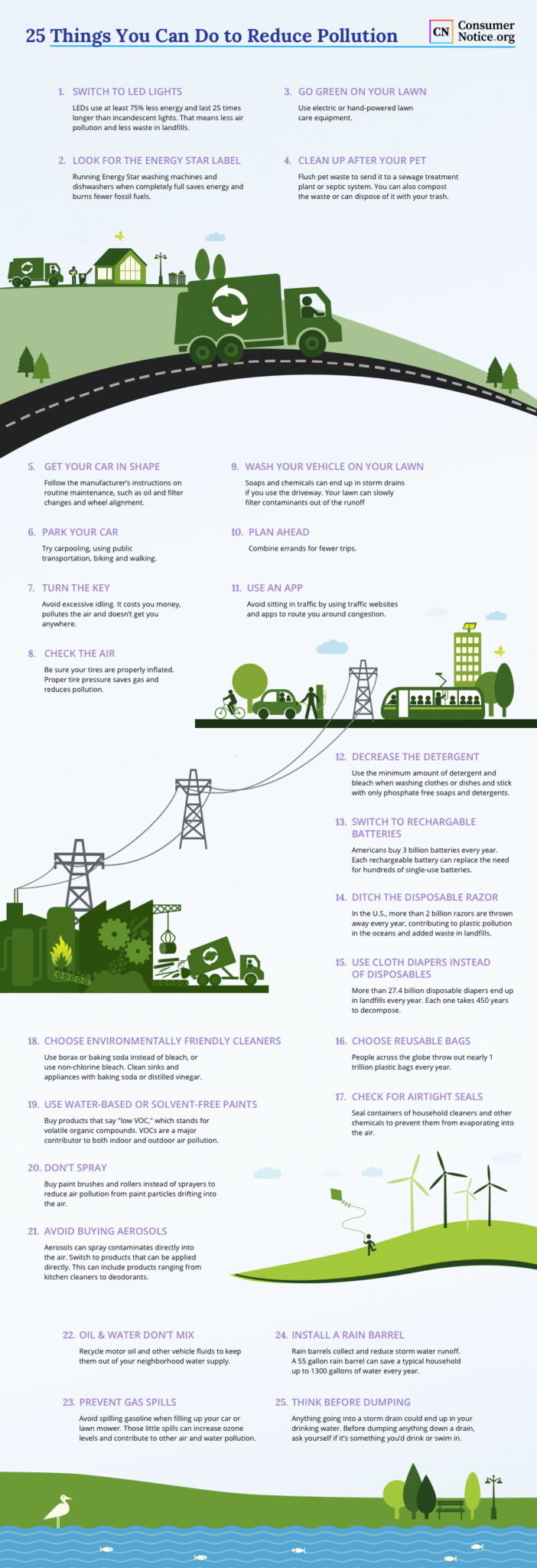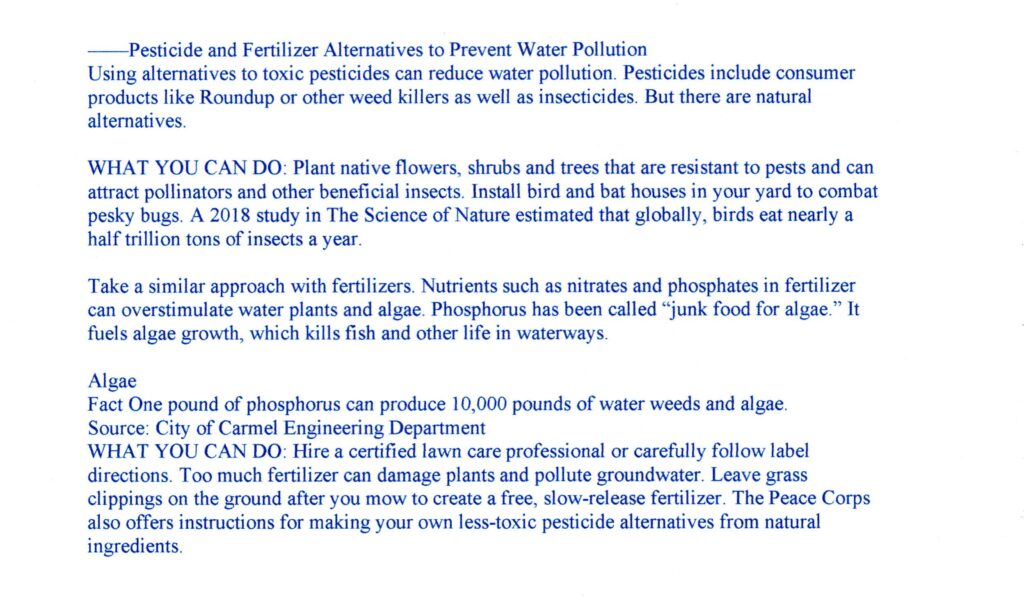What Locals Can Do

Yard Maintenance, Landscaping, and Gardening
~ Minimize the disturbance of shoreline areas by maintaining natural vegetation cover.
~ Minimize high maintenance grass areas.
~ Replant lakeside grassed areas with native vegetation. Do not import fine fill.
~ Use paving stones instead of pavement.
~ Stop or limit the use of fertilizers and pesticides.
~ Don’t use fertilizers in areas where the potential for water contamination is high, such as sandy soils, steep slopes, or compacted soils.
~ Do not apply fertilizers or pesticides before or during rain due to high likely hood of runoff.
~ Hand pull weeds rather than using herbicides.
~ Use natural insecticides such as Diatomaceous Earth.
~ Prune infested vegetation and use natural predators to keep pests in check. Pesticides can kill beneficial and desirable insects, ex ladybugs.
~ Compost yard and kitchen waste and use it to boost your garden’s health as an alternative to chemical fertilizers.

Agriculture
~ Locate animal confined facilities away from waterbodies. Divert incoming and treat outgoing runoff from these facilities.
~ Limit the use of fertilizers and pesticides.
~ Construct adequate manure storage facilities.
~ Do not spread manure during:
~wet weather
~on frozen ground
~in low lying areas prone to flooding
~within 3m of ditches
~within 5m of streams
~or within 30m of wells
~or on land where runoff is likely to occur.
~ Install barrier fencing where livestock is likely to graze on streambanks.
~ If livestock cross streams, provide graveled or hardened access points.
~ Provide alternate watering systems, such as dugouts, troughs, or nose pumps for livestock.
~ Maintain or create a buffer zone of vegetation along a streambank, river or lakeshore and avoid planting crops right up to the waterbody.

Auto Maintenance
~ Recycle used motor oil, anti-freeze, and batteries at recycling centers.
~ Use phosphate free biodegradable products to clean your car. Wash your car over grassy or graveled areas, but not over sewage systems.
~ Use a drop clothe if you do your own maintenance and mechanical work.
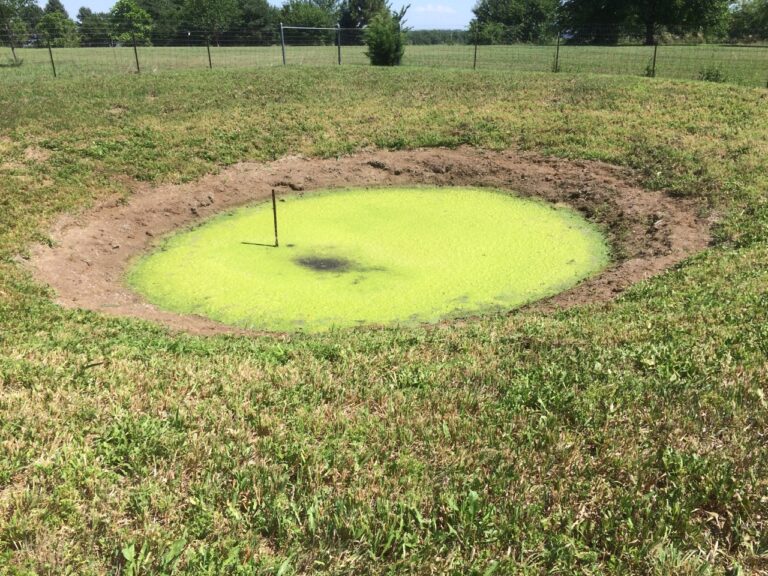
Onsite Sewage Systems
~ Inspect your system yearly, and have your septic tank pumped every 2-5 years by a septic service company.
~ Regular pumping is cheaper than having to build a drainage-field.
~ Use phosphate free soaps and detergents.
~ Don’t put toxic chemicals (paints, thinners, varnishes, waste oils, photographic solutions or pesticides) down the drain.
~ This can kill the bacteria at work within your onsite sewage system and contaminate waterbodies.
~ Conserve water: Run the dishwasher only when it’s full and use low flow shower heads and toilets.

Boating
~ Do not throw trash overboard or use the lake or other water bodies as a toilet.
~ Use phosphate free cleaners and biodegradable products instead of harmful chemicals.
~ Conduct major maintenance chores on land.
~ Use 4 stroke engines which are less polluting than 2 strokes. Use electric motors when practical.
~ Keep motors tuned and well maintained to minimize leaks and spills.
~ Use absorbent bilge pads to soak up minor oil leaks or spills.
~ Recycle used lubricating oil and left over paints.
~ Check for and remove all aquatic plant fragments from the boat before and leaving the lake.
~ Do not use metal drums in dock construction.
~ They rust, sink and become unwanted debris.
~ Use styrofoam or washed plastic barrel floats.
~ All floats should be labeled with the owner’s name, phone number and confirmation that the barrels have been properly washed.
Algal Blooms
What Is an Algal Bloom?
Critical to aquatic food webs, algae are photosynthetic organisms—in other words, they derive energy for growth from the sun. An algal bloom is the overgrowth of microscopic algae or algae-like bacteria in fresh, salt, or brackish waters. Depending on the type of algae or bacteria that cause it, an algal bloom may produce bad-smelling scum, foam, froth, or a paintlike slick. Algal blooms can be many colors, including blue-green, yellow, brown, pink, and red.
Not all algal blooms are toxic, but research indicates that a growing number are. A harmful algal bloom, or HAB, is a bloom that produces toxins that are dangerous to humans and potentially other organisms.

Type of Freshwater Harmful Algal Blooms Found At Tabor Lake
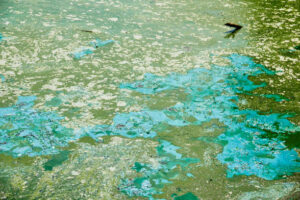
Cyanobacteria (blue-green algae)
Cyanobacteria blooms are the most common type of HABs in lakes, ponds, and other freshwater systems in this country, although they can occur in brackish and saltwater environments, too. Cyanobacteria are, as the name suggests, bacteria—but they perform photosynthesis, like algae do, and are often referred to as blue-green algae. Some, though not all, types of cyanobacteria can produce dangerous cyanotoxins. The most frequently reported type of bloom-forming cyanobacteria is Microcystis.
.
What Causes Freshwater Algal Blooms?
HABs occur both naturally in the environment and as a result of human activities, but the latter are vastly increasing the frequency, prevalence, and toxicity of HABs. The following are some of the main freshwater algal bloom causes:
Nutrient pollution
Nutrients like nitrogen and phosphorus, essential to plant growth, are a natural part of underwater ecosystems. But when they run off urban and rural surfaces and flow into a river, lake, pond, or reservoir in excess—a phenomenon known as nutrient pollution—they act like fertilizer and promote the growth of algae and bacteria. Most excess nutrients enter waterways via agricultural runoff (particularly from animal manure and chemical fertilizers that get washed from farms by rain), leaked waste from animal feedlots, stormwater runoff from urban and suburban areas, and discharges from wastewater treatment facilities. According to the U.S. Environmental Protection Agency’s most recent surveys on national water quality, nutrient pollution in the United States is a problem in more than one-third of lakes and about half of all rivers and streams.
Warm water
Warm water gives cyanobacteria a competitive advantage. These bacteria grow faster than more benign algae in higher temperatures, and once a bloom forms, a feedback loop can be triggered: As blooms grow thicker, the dark surfaces of the algae mats absorb more sunlight, which leads to warmer water and more algal growth.
Still water
Slow-moving or stagnant water can also become thermally stratified, meaning that a layer of warm water, which favors algal blooms, floats on top of cooler water. Factors that contribute to decreased water flow, or ponding, include drought, water extraction for irrigation or drinking, and the alteration of natural waterways via dams, canals, and other man-made infrastructure.
Climate change
Climate change is both increasing the frequency and duration of droughts in many parts of the country and intensifying extreme storms. Periods of drought interspersed with strong precipitation increase runoff from agricultural lands, lawns, and other sources, leading to higher nitrogen levels in rivers—and therefore harmful algal blooms.
Burning fossil fuels, deforestation, and land development are increasing the amount of carbon dioxide in the atmosphere. This fuels harmful algal blooms because cyanobacteria can feed on the carbon dioxide not only present at the surface of a water body but also dissolved in the water. And when algae die and sink to the bottom of a freshwater body, they decompose and release carbon that was once sequestered, providing more fuel for cyanobacteria growth.
Climate change and more severe droughts also modify the flow regime in freshwater bodies and can increase competition for ever-scarcer freshwater supplies. Reduced flows in waterways means the remaining water will be warmer and more stagnant, creating conditions ripe for algal blooms. If we continue to look to natural waterways as our primary source of water and don’t employ efficiency, conservation, and reuse measures to reduce excessive water diversions, freshwater bodies will become more vulnerable than they already are to HABs and the effects of climate change.
What Are the Effects of Freshwater Harmful Algal Blooms?
Health risks
People can be exposed to HAB toxins by swallowing or swimming in affected waters, eating poisoned fish or shellfish (even when food is cooked, algal toxins remain), or inhaling airborne droplets of affected water. Depending on the level of exposure and the type of algal toxin, health consequences may range from mild to severe to, in extreme cases, fatal.
Pets are vulnerable to HABs, too—dogs in particular, because they’re most likely to swim in or drink the water. A recent paper published in the journal Toxins found 63 dog deaths associated with HABs in 13 states.
There are three classes of cyanotoxins, and each type has different effects:
~ neurotoxins, which can cause neurological damage;
~peptide hepatotoxins, which can cause serious damage to the liver; and
~dermatotoxins, which can cause skin irritations and respiratory issues.
The cyanotoxins most frequently reported in freshwater ecosystems are the liver-damaging toxins microcystins and cylindrospermopsin.
Minimum Oxygen Levels For Fish
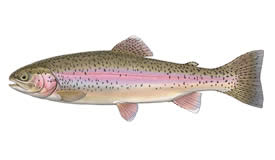 Rainbow Trout: 3mg per Litre
Rainbow Trout: 3mg per Litre

Whitefish: 4mg per Litre

Suckers: 1mg per Litre
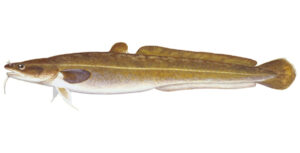 Lingcod (Burbot): 3mg per Litre
Lingcod (Burbot): 3mg per Litre
Northern Pike Minnow (Squawfish): 1.5mg per Litre
Species of Weeds In Tabor Lake


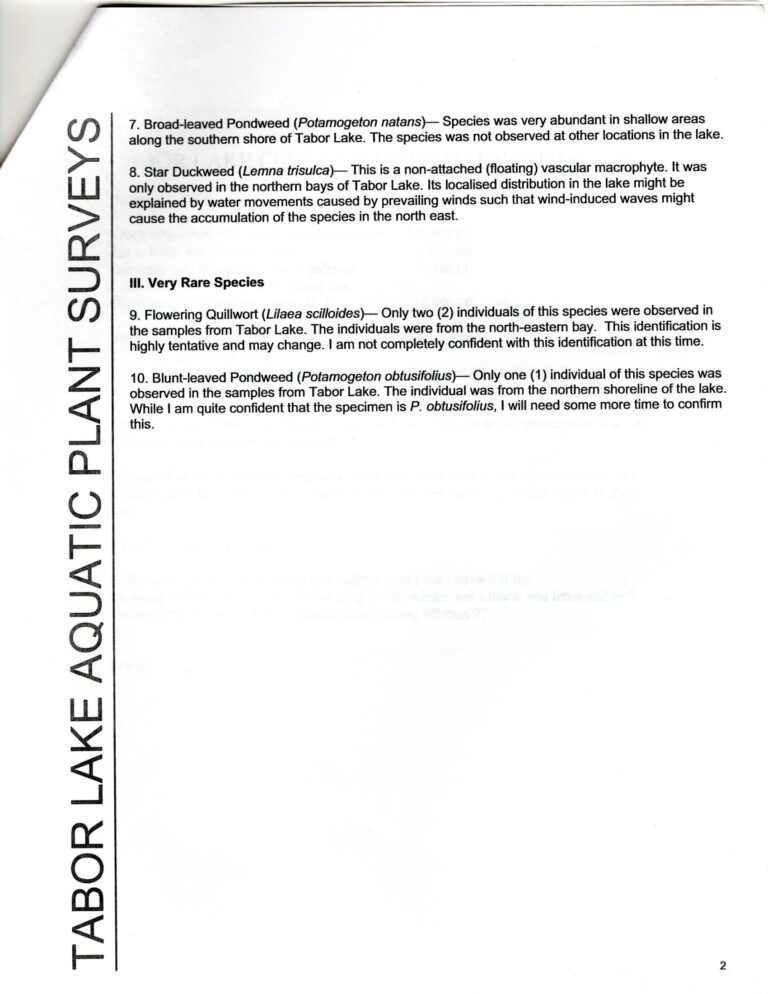
Additional Resources
Facts About Lily Pads
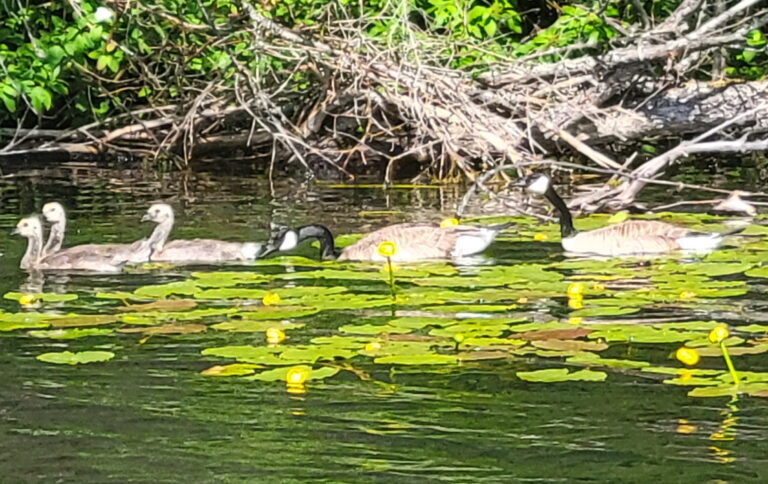
Canadian Geese In Lily Pads on Tabor Lake
By MELISSA LEWIS
Lily pads and flowers
A lily pad is the leaf of the water lily plant. If you’ve ever encountered a body of water populated with lily pads, you’ve likely been amazed at how these unusual aquatic plants seem to float on top of the water. Lily pads are just one part of a larger pond plant that thrives in shallow lakes and ponds. There are about 70 different species of this aquatic flowering plant, found in both temperate and tropical zones. Although these plants appear to be floating with ease, there is actually a lot going on beneath the placid surface. Even some of the most common facts about lily pads are quite surprising.
Parts of the Water Lily Plant
The lily pad you see floating on top of the water is only one part of a water lily (Nymphaeaceae spp.) plant. Characteristically round, flat and waxy, a lily pad is simply a leaf with the ability to repel moisture from its surface. Though lily pads appear as if they are simply floating atop the water, they are actually attached to a stem that may extend many feet down to the bottom of a pond or lake, where the plant is rooted.
What Lies Beneath
The underside of a lily pad looks vastly different than the top. A system of stems and tubes run underneath the lily pad. These tubes, which are connected to openings called stomas in the top of the leaves, help the pad float and collect oxygen through the stoma. This oxygen is transferred to the water lily’s stem and down to the plant’s roots. Up to two liters of air a day are sent from the top of the lily to its roots through this mechanism. The bottoms of lily pads may also be a dark purple color in sharp contrast to the green tip surface—this dark coloration helps the leaves absorb the sunlight required for photosynthesis.
Invasive Potential
Water lilies reproduce both by way of seeds and by the spreading of their tenacious roots, or rhizomes. Though lily pads spread relatively slowly, they can eventually take over entire shorelines and are considered invasive in some areas. Water lilies and their surface lily pads can blanket areas of water as deep as six feet. A single rhizome can reproduce and grow to cover an area 15 feet in diameter in as little as 15 years. When spread to non-native habitats, water lilies can shade the water and make it too cold for native species of fish and plants. Water lilies may also compete with native plants for nutrients.
Lily Benefits
While invasive in some areas, water lilies are native and beneficial in other areas. Water lilies grow in the calm shoreline waters of lakes and ponds. In moderate quantities, these plants greatly benefit their habitats by providing shelter for fish and shade to keep the water cool. Water lilies provide safe spaces for frogs to perch on their leaves, hiding from underwater predators. Lilies also produce natural oxygen that allows fish to breathe and beneficial bacteria to thrive.
Medicinal Uses
In areas where water lilies are native, native American tribes commonly used different parts of the plant to treat a variety of ailments. When mashed, the roots created a poultice that reduced swelling. These poultices were also used to treat reproductive problems in women, and also as a mouth rinse. The surface leaves—the lily pads—were used to make cooling compresses.
Lily Pad Role
The roots of water lily plants are attached to the rich muddy soil at the bottom of a pond while their leaves and white or pinkish flowers grow on long stems that reach to water’s surface. The pads are a deep bright green and cut from the edges almost to the center, have a glossy leathery texture and float on the water or slightly beneath it where they provide a hiding place for frogs seeking to escape larger predators. If the pads, which can measure up to 10 or 11 inches across, are large and thick enough to support their weight, frogs, small turtles and insects such as dragonflies sometimes rest on top of them. Frogs hide on the pads to evade being caught by water snakes and certain species of fish.
Other small creatures that enjoy the safety of lily pads include beetles that help pollinate the water lilies and damselflies, while the undersides of the pads are home to snails. The eggs of long-horned and whirligig beetles are often found attached to the bottoms of the lily pads. Dragonflies and damselflies also lay their eggs on top of lily pad leaves.
Other Benefits
Not only are lily pads attractive resting places to many types of creatures, they also help keep pond water cool by providing shade as they grow more closely together. This discourages the growth of some types of algae that can deplete the pond of the oxygen that fish and other creatures need to survive. In addition to providing spatial beauty by contrasting with taller aquatic plants, lily pads also provide an efficient water filtration system in ponds by converting the ammonia produced by fish into valuable nutrients used by the plants. Maintaining a ratio of 2/3 plant coverage to 1/3 open water assures that algae growth is kept under control and that any fish living in the pond aren’t threatened by an excess of nitrates that is harmful to them.
